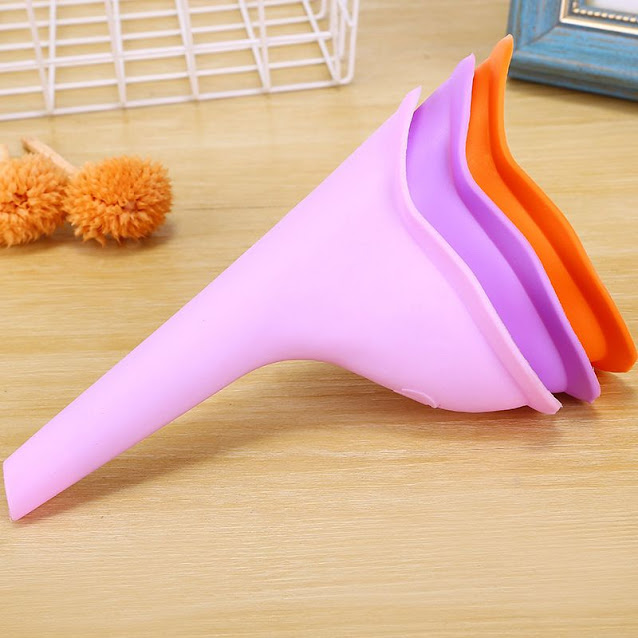From Necessity to Mainstream: The Global Evolution of Female Urination Devices
 |
| Global Female Urination Devices |
History and Evolution
Female urination devices were first invented in the early 2000s as camping and
hiking became more popular activities for women. Early devices like the SheWee
and Freshette were intended to allow women to stand and urinate outdoors in a
more sanitary manner, avoiding having to "free hand" or hover over
holes in the ground. These initial devices were made of silicone and consisted
of a hollow funnel that fit over the urethra to direct urine flow away from the
body. While crude compared to modern designs, they fulfilled a practical need
and opened the door to further innovations in the space.
Advancements in Materials and Design
In the late 2000s and early 2010s, more companies began developing stand-to-pee
device as the market potential grew. New materials like medical-grade plastic
and thermoplastic elastomers replaced silicone, allowing for improved
durability and customizable sizing. Ergonomic handles and contours were
introduced to enhance user comfort. Devices also began incorporating splash
guards and reservoirs to contain urine and prevent messy discharges.
Stand-to-pee stances became more natural with stance-supporting legs added to
some models. Advancements accelerated stand-to-pee device toward mainstream
practicability and cultural acceptance.
Health, Sanitation, and Empowerment Benefits
As stand-to-pee device spread in popularity, advocates touted their sanitation,
health, and empowerment benefits. Hygienically directing flow away from skin
reduces risks of infections from public restrooms. Users no longer need to
lower layers and hover precariously over toilets, lessening chances of
contact-borne illnesses. Environmental and social constraints no longer
determine urination needs as outdoor activities became more accessible. Reduced
barriers boosted confidence and independence for women during travel, camping,
sporting events, and emergencies. Studies also linked devices to reduced UTIs
from contaminated restrooms. Overall, perceived health and sanitation
advantages helped normalize public female urination.
Inclusion in Outdoor Retail and Pop Culture
In the late 2010s and early 2020s, expanded availability and cultural exposure
propelled Global Female Urination Devices into broader acceptance. Mainstream sporting goods
and outdoor retailers like REI began stocking top brands alongside men's
urinary products. High-profile endorsements from athletes, bloggers, and
celebrities brought attention to devices. Inclusion in summer blockbusters,
sitcoms, and documentaries introduced larger audiences to the concept. As
devices became familiar pop culture touchpoints, lingering social taboos
diminished. Younger generations saw them as practical tools rather than
sensitive subjects. Expanded distribution and lighthearted portrayals in media
helped devices find standard inclusion in the outdoor market.
A Budding Global Phenomenon
Today, female urination devices are a firmly established global phenomenon. Major
manufacturers distribute worldwide with sizable international sales alongside
America and Europe. Translated instructions and sizing reflect diverse
cultures. Outdoor retailers stock bestsellers in locations from Tokyo to Cairo
to Rio de Janeiro. Local companies also produce and sell affordable options in
developing markets. Smartphone apps even assist users in finding restrooms
accommodating their needs while traveling between countries. As health concerns
rise and recreational outdoors activities spread cross-culturally, the market
continues expanding.
Female urination devices have come a long way from crude early models to
today's refined offerings. Advancements in materials, designs, distribution,
and cultural landscape enabled their transformation from eccentric novelty to
mainstream practical tool embraced globally. Whether enabling outdoor adventure
or daily activities, these devices empower women with sanitary solutions on
their terms. Their inclusion enriches lives by reducing biological restrictions
on living fully. Technologies enabling empowerment and inclusion for all people
deserve celebration as hallmarks of social progress.
Societal Acceptance Still Evolving
While significant progress has been achieved, full societal acceptance of female
urination devices is still emerging in some contexts. Traditional and
conservative values persist in influencing certain cultures. Misinformation
also contributes to lingering stigma. However, as younger generations familiar
with the concept come of age, insights spread. Broader conversations addressing
women's health and empowerment nurture more understanding environments.
Technologies can subtly shape perspectives through exposure alone. Overall
reception trends positive as stand-to-pee device uplift rather than challenge
social norms. With time, knowledge and familiarity may alleviate remaining
reservations in pockets of the world. Their benefits of convenience, sanitation
and accessibility for women deserve celebrating on the global stage.


%20Treatment%20(1).jpg)
Comments
Post a Comment